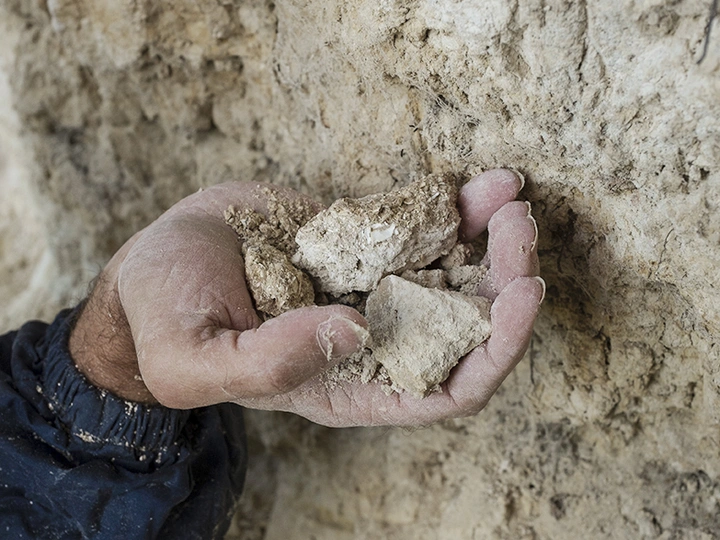Territory of Chalk

Molinard Elsa
Monari Giacomo
Prìa was founded in 2021 by Antoine Gouachon, Elsa Molinard, and Giacomo Monari. Our practice is rooted in traditional know-how and a rational use of local resources. We are committed to contextual and environmental research in order to propose new responses to urban and rural architecture in transition.
Based in Nice, our studio mainly operates across the Mediterranean, particularly in South-East France, Corsica and Greece.
Our team brings together complementary paths and sensibilities.
Antoine studied architecture in Hamburg and Paris-La Villette. He worked at Studio Mumbai, developing a strong sensitivity to earthen materials and craftsmanship. He later specialised as a mason in eco-construction and rammed earth, and participates in several such projects in France since 2021.
Elsa comes from a background in textile and spatial design. After studying in Paris and Jerusalem, she graduated from Design Academy Eindhoven. Her work bridges architecture, art, and material experimentation, shaped by collaborations with Peter Zumthor and Studio Mumbai. Since 2020, she conducts ongoing research into local clays for ceramics.
Giacomo studied architecture in Madrid and Rome. He gained experience in architectural and urban projects through collaborations with several international studios, including Manuel Cervantes and Studio Mumbai, and served as assistant to Bijoy Jain at the Mendrisio Architecture School. Since 2025, he is attending a master’s at the École de Chaillot in Paris to become a certified heritage architect.
Prìa’s recent work includes participation in Fondation Cartier’s Breath of an Architect (2022–24), Landscape Practices of the Agriates (2023–24, winner of Mondes Nouveaux), Fabbrica Design residency on Corsican clays, and the Matière Horizons exhibition at the Architecture and Landscape Biennale of Versailles, supported by Verrecchia Foundation.
In 2023, we have also launched Prìa Construction, a parallel entity dedicated to rammed earth building.
Territory of Chalk explores the architectural and environmental potential of chalk—a widely present but overlooked material in contemporary construction. Rooted in a commitment to low-carbon building, the project combines fieldwork, material experimentation, and contextual analysis.
The research began in 2022 with the project Matière d’Horizons, an installation for the Biennale d’Architecture et de Paysage in Versailles. This first phase explored the geological, cultural, and spatial significance of chalk in the Paris Basin. The project combined material experimentation with a critical reflection on the preservation of geological landscapes, using matter as both medium and message to raise collective awareness and converge different disciplines. Following this, in 2023 we created an in-situ sculptural installation for the exhibition Breath of an Architect at Fondation Cartier in Paris—a large-scale piece entirely made of compacted chalk.
These experiences confirmed both the expressive and structural potential of the material and revealed the possibility to reintroduce chalk into an architectural and constructive practice.
Through a combined approach of documentary investigation and hands-on experimentation, we now aim to deepen both the technical research and a landscape inquiry at a geo-regional scale. By exploring chalk-rich territories across Europe—from northern France to the UK, Germany, and Denmark—we seek to develop a transferable methodology for building with chalk and a short film documentary that bridges landscape, vernacular heritage and construction research. The process involves geological surveys, material collection, and lab-testing of chalk’s compressive and structural properties using additive-free compaction techniques. By bridging architectural experimentation with geology, craftsmanship, and pedagogy, we hope to support a wider cultural shift : from extraction to care, from standardisation to context, from surface to ground.